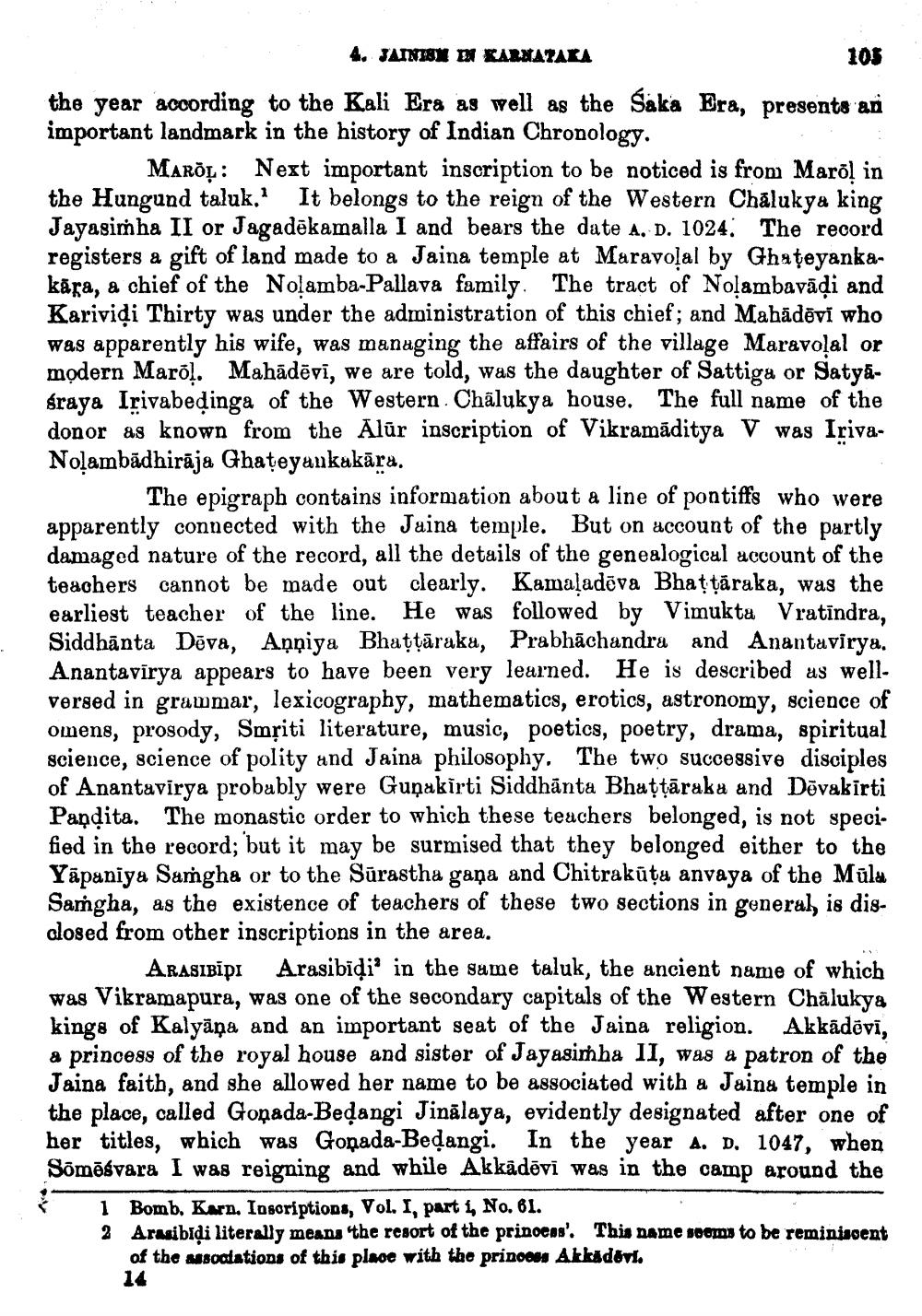________________
4. JAINISI E KARXAZALA
105 the year according to the Kali Era as well as the Saka Era, presents ani important landmark in the history of Indian Chronology.
MARŌĻ: Next important inscription to be noticed is from Marolin the Hungund taluk." It belongs to the reign of the Western Chalukya king Jayasimha II or Jagadēkamalla I and bears the date A. D. 1024. The record registers a gift of land made to a Jaina temple at Maravolal by Ghateyankakāga, a chief of the Nolamba-Pallava family. The tract of Nolambavādi and Karividi Thirty was under the administration of this chief; and Mahādēvi who was apparently his wife, was managing the affairs of the village Maravolal or modern Marol. Mahādēvi, we are told, was the daughter of Sattiga or Satyasraya Irivabedinga of the Western Chalukya house. The full name of the donor as known from the Alūr inscription of Vikramāditya V was IrivaNolambādhirāja Ghateyankakāra.
The epigraph contains information about a line of pontiffs who were apparently connected with the Jaina temple. But on account of the partly damaged nature of the record, all the details of the genealogical account of the teachers cannot be made out clearly. Kamaļadēva Bhattāraka, was the earliest teacher of the line. He was followed by Vimukta Vratīndra, Siddhānta Dēva, Aņņiya Bhattāraka, Prabhāchandra and Anantavirya. Anantavīrya appears to have been very learned. He is described as wellversed in grammar, lexicography, mathematics, erotics, astronomy, science of omens, prosody, Smriti literature, music, poetics, poetry, drama, sp science, science of polity and Jaina philosophy. The two successive disciples of Anantavirya probably were Guņakirti Siddhānta Bhattāraka and Dāvakirti Pandita. The monastic order to which these teachers belonged, is not specified in the record; but it may be surmised that they belonged either to the Yāpaniya Samgha or to the Sūrastha gana and Chitrakūta anvaya of the Mūld Samgha, as the existence of teachers of these two sections in general, is disclosed from other inscriptions in the area.
ARASIBĪPI Arasibīļi' in the same taluk, the ancient name of which was Vikramapura, was one of the secondary capitals of the Western Chalukya kings of Kalyāņa and an important seat of the Jaina religion. Akkādēvi, a princess of the royal house and sister of Jayasimha II, was a patron of the Jaina faith, and she allowed her name to be associated with a Jaing temple in the place, called Gonada-Bedangi Jinālaya, evidently designated after one of her titles, which was Gonada-Bedangi. In the year a. D. 1047, when Sõmāśvara I was reigning and while Akkādēvi was in the camp around the
1 Bomb, Karn. Inscriptions, Vol. I, part 1, No. 61. 2 Armgibidi literally means the resort of the prinocos'. This name seems to be reminiscent
of the assodations of this plaoe with the princess Atkadovi. 14




